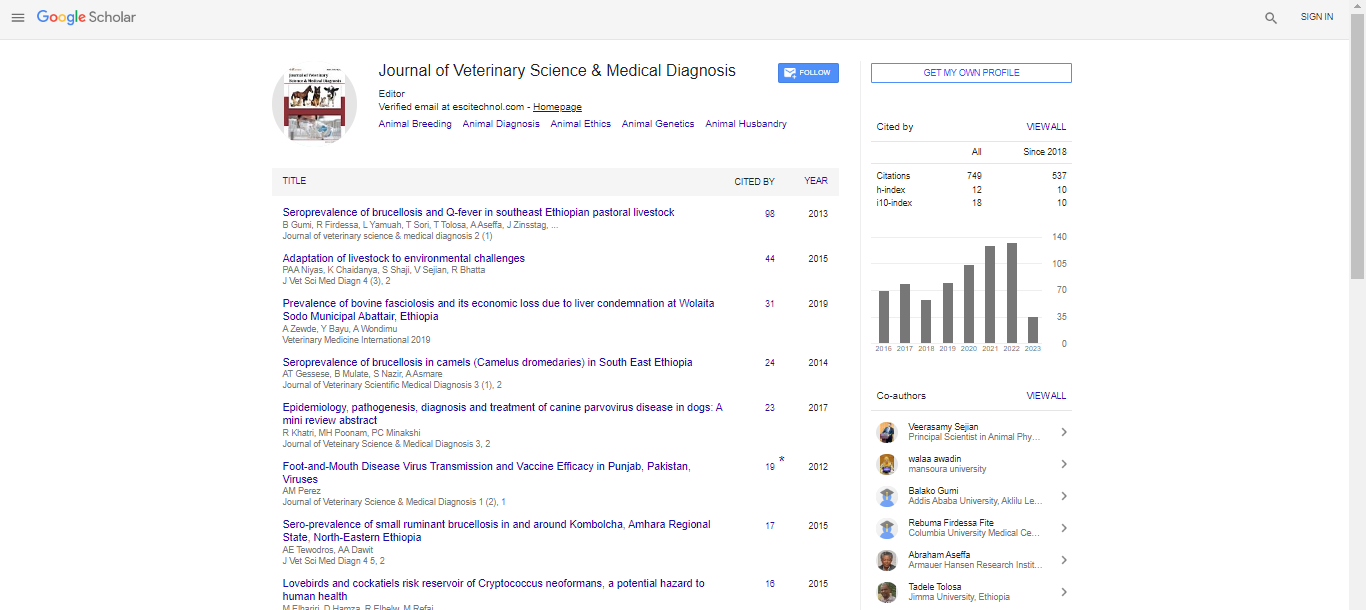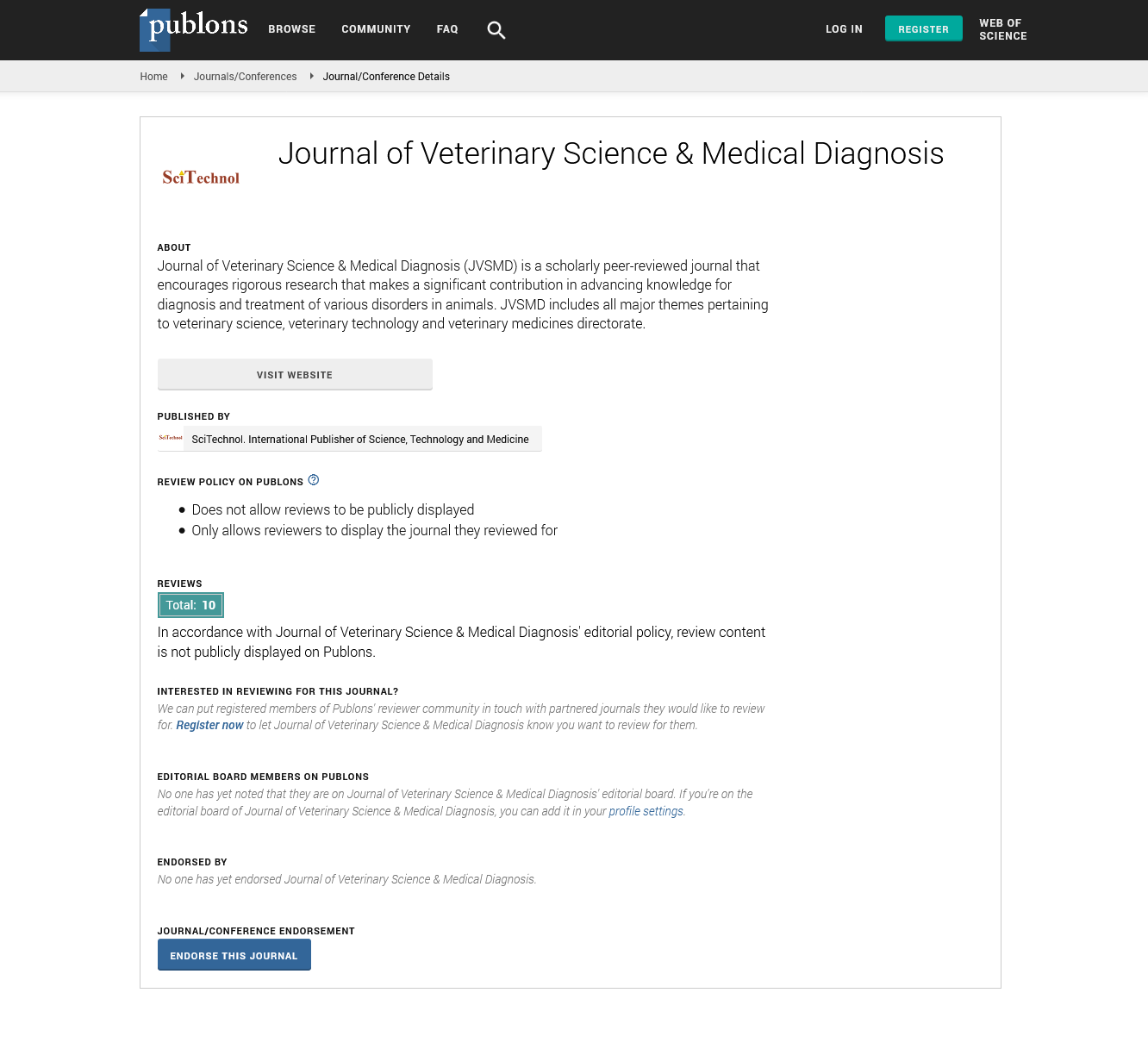Letter to Editor, J Vet Sci Med Diagn Vol: 10 Issue: 1
Comparison of three alternative methods for detection of benzimidazole resistance in gastrointestinal nematodes in goats
Abstract
The present investigation was planned with the objective of studying the status of benzimidazole resistance in gastrointestinal nematodes of goats at Amanala farm, Jabalpur using in vivo faecal egg count reduction test (FECRT), in vitro egg hatch assay (EHA) and molecular test - allele specific PCR (AS-PCR). The FECRT and egg hatch assay were conducted as described by Coles et al. (2006). AS- PCR was conducted as per Chandra et al. (2015) with minor modifications. In FECR test, fenbendazole reduced the faecal egg count by 23% with a lower confidence interval of ¬-32%. Haemonchus contortus, Trichostrongylus spp., Oesophagostomum spp., Strongyloides spp. and Bunostomum spp. larvae were identified in the pre-treatment faecal cultures but post treatment coproculture revealed H. contortus (92%) as the major nematode exhibiting resistance followed by Oesophagostomum spp. (8%). Effective dose (ED50) value of 0.335 μg/ml of thiabendazole confirmed the existence of benzimidazole resistant nematodes in egg hatch assay. In molecular test, the nested PCR amplicon size was about 820 bp and the RsaI RFLP digested fragments showed major fragments of 550 bp, 170 bp and 100 bp. The size of the susceptible allele-specific gene, resistant allele-specific gene and non-allele-specific gene were 603 bp, 222 bp and 774 bp, respectively. The results of AS-PCR showed that 62% of H. contortus larvae were homozygous resistant (rr), 24% heterozygous (rS) and 14% homozygous susceptible (SS). The prevalence of benzimidazole resistance allele (r) was also significantly (p<0.01) higher (74%) as compared to susceptible allele (S) (26%). Although result of all tests indicated the presence of benzimidazole resistant nematodes, FECRT revealed the genus of resistant nematodes whereas the AS-PCR also detected genotypes (rr, rS, SS) of H. contortus population.
 Spanish
Spanish  Chinese
Chinese  Russian
Russian  German
German  French
French  Japanese
Japanese  Portuguese
Portuguese  Hindi
Hindi 
